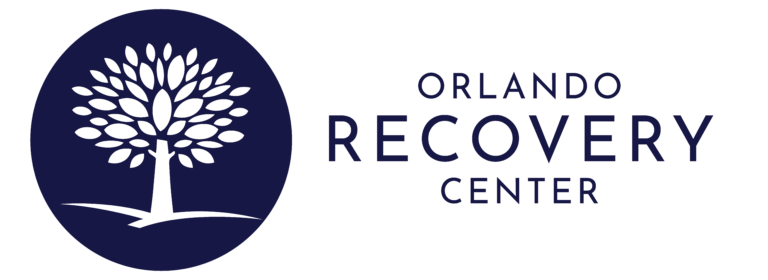Key Takeaways
- Heroin is a highly addictive opioid with severe short-term and long-term effects on the body, including the risk of heroin use disorder.
- Heroin withdrawal symptoms begin within 6-12 hours post-last dose, peaking at 1-3 days, and can include muscle aches, anxiety, and intense cravings.
- Early intervention and medical support are crucial in managing withdrawal symptoms and reducing the risk of relapse.
- Severe withdrawal symptoms can lead to life-threatening situations like dehydration or heart failure if not properly managed.
- Medically supervised detox is essential for safety, symptom management, and providing emotional support.
- Medications such as buprenorphine, methadone, and clonidine are effective in managing withdrawal symptoms and reducing cravings.
- Preventing fatalities during heroin withdrawal involves improving access to medication-assisted treatment and expanding harm reduction services.
- Support networks play a critical role in avoiding withdrawal-related deaths and supporting long-term recovery.
- Aftercare programs are vital for sustained recovery, offering continuous support and resources to prevent relapse.
Dangers of Heroin Withdrawal
Heroin withdrawal involves intense physical and psychological symptoms that can be severe and even life-threatening. Key dangers include dehydration from vomiting and diarrhea, potential for severe dehydration, and increased risk of mental health issues such as depression and suicidal thoughts. Effective management requires medical supervision to monitor symptoms, provide medications to ease discomfort, and offer emotional support to reduce relapse risk. Understanding these risks highlights the need for a structured approach to ensure a safer recovery process.
Heroin and Its Impact on the Human Body
Heroin, a potent and highly addictive opioid, wreaks havoc on the body, causing both immediate sensations and long-term physical damage. When heroin enters the brain, it is swiftly converted into morphine, which binds to mu-opioid receptors (MORs). These receptors are crucial in regulating pain, hormone release, and feelings of well-being. The binding of heroin to MORs triggers a surge in dopamine levels, creating an intense rush of pleasure that reinforces the desire to continue using the drug. Research indicates that this powerful dopamine release is central to heroin’s addictive potential.
Short-Term Effects of Heroin
- ‘Heroin Eyes‘: Constricted pupils are a hallmark of heroin use.
- Warm Flushing of the Skin: Users often experience a noticeable warmth spreading across the skin.
- Dry Mouth: A common side effect, leaving users with an uncomfortably parched mouth.
- Heavy Limbs: A sensation of heaviness in the arms and legs is frequently reported.
- Respiratory Depression: The most dangerous acute effect, heroin can severely slow or stop breathing, leading to coma, brain damage, or death.
Long-Term Effects of Heroin Use
- Chronic Infections: Long-term use increases the risk of serious infections like hepatitis and HIV.
- Lung Complications: Persistent heroin use can lead to significant respiratory issues.
- Brain Damage: Damage to the brain’s white matter, impairing decision-making and stress response, is a serious consequence.
- Heroin Use Disorder: Studies have shown that prolonged use often results in an uncontrollable urge to seek and use heroin, classified as a disorder.
Understanding these severe risks underscores the critical importance of seeking professional help for heroin addiction. The withdrawal symptoms associated with quitting heroin are intense, making medically supervised detoxification essential for a safe and successful recovery.
Heroin Withdrawal: Timeline and Stages
Heroin withdrawal is a critical and challenging phase in the recovery journey, characterized by a range of physical and psychological symptoms that manifest when a person stops using heroin. This withdrawal process unfolds in distinct stages, each with its own set of symptoms and challenges.
Treatment Can Be Life Changing
Whether you are struggling with addiction, mental health or both, our expert team is here to guide you every step of the way. Don’t wait— reach out today to take the first step toward taking control of your life.
Early Symptoms (6-12 Hours After Last Dose)
- Onset Timeline: Withdrawal symptoms typically begin within 6-12 hours after the last dose of heroin.
- Initial Physical Symptoms: Individuals may experience muscle aches, sweating, yawning, and a runny nose.
- Psychological Symptoms: Anxiety, agitation, and irritability are common as the body reacts to the absence of the drug.
- Flu-like Symptoms: The early phase often mimics severe flu, with added intensity and discomfort.
- Significance: Studies have found that the risk of suicide is significantly higher among substance abusers who do not seek treatment. Recognizing these early signs is crucial for timely intervention and management, reducing the risk of relapse.
Peak Symptoms (1-3 Days After Last Dose)
- Peak Timeline: Symptoms reach their peak intensity between 1-3 days after the last heroin use.
- Severe Physical Discomfort: Common symptoms include severe muscle aches, nausea, vomiting, abdominal cramping, diarrhea, shaking, and intense sweating.
- Psychological Challenges: During this stage, individuals may face overwhelming cravings for heroin, along with depression, anxiety, and insomnia.
- High Relapse Risk: This phase is considered the most difficult, with a high risk of relapse due to the severity of symptoms.
- Medical Supervision: Continuous medical care is essential during this phase to manage symptoms and prevent complications.
Post-Acute Withdrawal Symptoms (PAWS)
- Duration: While the acute phase of withdrawal typically lasts about a week, post-acute withdrawal symptoms (PAWS) can persist for months.
- Ongoing Symptoms: Mood swings, low energy, and persistent cravings can continue to affect individuals during PAWS.
- Long-term Support: Access to ongoing medical support, counseling, and medication-assisted treatment (MAT) is crucial for managing PAWS and supporting long-term recovery.
Access to professional treatment programs is essential, offering medications like buprenorphine, methadone, and naltrexone to alleviate physical discomfort and curb cravings.
The Lethal Risks of Heroin Withdrawal
Heroin withdrawal, although not inherently fatal, poses serious health risks that can lead to life-threatening situations if not properly managed. While the physical symptoms of withdrawal, such as nausea, vomiting, and diarrhea, are not usually deadly on their own, they can cause severe complications that may result in death if left untreated.
Direct Risks
- Dehydration: Persistent vomiting and diarrhea can lead to rapid fluid loss, resulting in severe dehydration. Without medical intervention, dehydration can cause renal failure, heart failure, or hypernatremia, which is a dangerous rise in blood sodium levels that can lead to seizures and cardiac arrest.
- Aspiration Pneumonia: There is a risk of aspiration pneumonia during withdrawal if an individual inhales vomit into the lungs, which can lead to severe respiratory complications and potentially death.
- Immune System Weakening: The physical stress of withdrawal can weaken the immune system, making the body more susceptible to infections and other health issues.
Indirect Risks
- Increased Suicide Risk: The psychological strain of withdrawal, including intense depression and anxiety, can exacerbate underlying mental health issues. This can lead to suicidal thoughts or actions, especially if the individual lacks proper support.
- Accidental Injuries: Impaired cognitive function and judgment during withdrawal can lead to accidents or unintentional injuries, which may be fatal.
- Complications from Malnutrition: Persistent vomiting and diarrhea can also lead to malnutrition, weakening the body’s systems and increasing the risk of severe complications.
A medically assisted detox can help manage symptoms, prevent severe complications, and reduce the risk of death.
Preventing Fatal Outcomes
- Access to Mental Health Support: Providing mental health care during withdrawal is vital to addressing the psychological distress that may lead to suicide or other risky behaviors.
- Safe Environment: Ensuring a safe, supportive environment during detoxification can help prevent accidents and other indirect causes of death.
- Continuous Monitoring: Statistics show the importance of ongoing medical supervision in identifying and managing any potential health risks early, thereby preventing life-threatening situations.
Understanding these risks highlights the critical need for a structured, professionally supervised approach to heroin withdrawal. With the right support and medical care, the dangers associated with withdrawal can be effectively managed, greatly reducing the risk of fatal outcomes.
Risk Factors for Severe Heroin Withdrawal Symptoms
Severe heroin withdrawal symptoms can be life-threatening, and understanding the risk factors that contribute to their intensity is crucial for safe and effective detoxification. The severity of withdrawal symptoms varies significantly among individuals, influenced by several key factors related to their heroin use and overall health.
Key Risk Factors for Severe Heroin Withdrawal
- Duration of Heroin Use: The longer an individual has been using heroin, the more likely they are to experience severe withdrawal symptoms. Prolonged use leads to greater physical dependence, making the withdrawal process more challenging.
- Quantity of Heroin Consumed: Higher doses of heroin increase the risk of intense withdrawal symptoms. Those who have consumed large amounts of heroin regularly are more susceptible to severe physical and psychological effects during detox.
- Method of Administration: The method by which heroin is used also plays a critical role. Intravenous use, for example, delivers the drug directly into the bloodstream, leading to a more intense addiction and, consequently, more severe withdrawal symptoms.
- Co-occurring Mental Health Disorders: Individuals with pre-existing mental health conditions, such as anxiety, depression, or PTSD, are at a higher risk of experiencing aggravated withdrawal symptoms. These conditions can complicate the detox process and require additional care and attention.
- Concurrent Substance Use: The use of other substances, such as alcohol or benzodiazepines, alongside heroin can intensify withdrawal symptoms and increase the risk of complications. Polysubstance use often leads to a more complex withdrawal process.
- Previous Withdrawal Experiences: Individuals who have gone through withdrawal multiple times may experience a phenomenon known as “kindling,” where each subsequent withdrawal becomes more severe. This heightened sensitivity can make detoxification more dangerous.
- Lack of Supportive Environment and Medical Care: The absence of a supportive environment or access to proper medical care during detox increases the risk of severe withdrawal symptoms. A structured and medically supervised detox program is essential to safely manage symptoms and reduce the risk of complications.
Medical supervision during detoxification is strongly recommended to manage withdrawal symptoms safely, minimize the risk of severe complications, and reduce the likelihood of relapse.
Effective Management of Heroin Withdrawal Symptoms
Managing heroin withdrawal symptoms is a crucial component of the recovery process for individuals with opioid use disorder. Effective management typically begins with medically supervised detoxification, providing a safe environment where symptoms can be closely monitored and treated.
The Role of Medications
- Methadone and Buprenorphine: These medications are key in managing withdrawal symptoms. Both act on the same opioid receptors in the brain as heroin, but without producing a high. This helps reduce cravings and ease withdrawal discomfort, making the detox process more tolerable.
- Clonidine: As an alpha-2 adrenergic agonist, clonidine helps manage the autonomic symptoms of withdrawal, such as sweating and rapid heart rate, without affecting opioid receptors.
- Lofexidine: Another alpha-2 adrenergic agonist, lofexidine, similar to clonidine, is FDA-approved and helps alleviate physical symptoms of withdrawal.
- Lucemyra (Lofexidine Hydrochloride): The first non-opioid medication approved by the FDA for managing opioid withdrawal symptoms. Lucemyra is particularly useful in easing the process of abrupt opioid discontinuation.
These medications are most effective when used as part of a comprehensive treatment plan that includes behavioral therapy and support systems.
Medically Supervised Detox
Medically supervised detox is a vital first step in the recovery process, offering several key benefits:
- Enhanced Safety: Continuous medical monitoring during detox allows for the immediate intervention if life-threatening symptoms or complications arise.
- Symptom Management: Healthcare providers can administer medications to alleviate withdrawal symptoms, making the detox process more comfortable and manageable.
- Emotional Support: A supportive environment during detox is essential for emotional well-being, offering psychological and social support that helps reduce the risk of relapse.
- Identification of Co-Occurring Disorders: Detox often uncovers co-occurring mental health or medical issues, allowing for comprehensive treatment that addresses all aspects of the individual’s health.
This structured approach prevents the risks associated with unsupervised withdrawal, such as relapse or fatal outcomes, and sets the stage for ongoing recovery.
Behavioral Therapy and Long-Term Recovery
- Behavioral Therapy: Behavioral therapies are essential in modifying attitudes and behaviors related to drug use. They help individuals develop coping strategies, enhance motivation, and build healthy life skills, contributing to long-term recovery.
- Comprehensive Treatment Approach: Combining medication with behavioral therapy provides a holistic approach to managing heroin withdrawal and supporting recovery. This comprehensive strategy has been shown to improve patient survival, increase retention in treatment, and reduce illicit opioid use.
Importance of a Tailored Medication-assisted Treatment (MAT) Plan
- Individualized Treatment: The effectiveness of withdrawal management varies based on individual factors such as the duration and severity of heroin use, co-occurring mental health conditions, and the presence of other substances. Medical professionals tailor MAT plans to address these specific needs, ensuring the safest and most effective treatment.
- Ongoing Innovation: The FDA supports the development of new treatments and strategies for opioid addiction, emphasizing the importance of continuous innovation in this area to improve recovery outcomes.
Effective management of heroin withdrawal symptoms is crucial for a successful recovery. Medically supervised detox, coupled with the appropriate use of medications and behavioral therapy, provides a comprehensive approach that enhances safety, comfort, and long-term recovery prospects.
Strategies to Prevent Fatalities During Heroin Withdrawal
Heroin withdrawal is a critical phase in recovery that carries significant risks, including the potential for fatalities. Preventing deaths during this challenging period requires a comprehensive approach that addresses both direct and indirect factors associated with withdrawal. Key strategies from the U.S. Centers for Disease Control and Prevention (CDC) and the US Department of Health and Human Services (HHS) focus on overdose prevention and expanding treatment capacity.
Key Strategies
- Enhancing Medication-Assisted Treatment (MAT): Improving access to MAT options like methadone and buprenorphine helps alleviate withdrawal symptoms and reduce cravings. These medications support the detox process and are essential for managing opioid use disorder effectively.
- Increasing Naloxone Availability: Expanding the distribution of naloxone, an opioid overdose-reversal medication, is crucial for preventing overdose deaths. Naloxone can rapidly counteract the effects of an opioid overdose, saving lives in emergency situations.
- Addressing Stigma: Reducing the stigma associated with opioid use disorder encourages individuals to seek help without fear of judgment or discrimination. This promotes early intervention and access to treatment services.
- Expanding Harm Reduction Services: Providing harm reduction services, such as supervised injection sites and needle exchange programs, creates safer environments and reduces the risk of overdose and disease transmission.
- Utilizing Telehealth Services: Implementing telehealth services allows individuals in remote or underserved areas to access treatment and support more easily. This approach helps bridge gaps in care and ensures more widespread access to necessary services.
- Revising Federal Treatment Regulations: Updating regulations to allow for more take-home doses of medication and care after telehealth consultations can improve treatment adherence and support ongoing recovery.
By combining these strategies with strong support networks and continued treatment, the risk of death during heroin withdrawal can be significantly reduced, enhancing the chances of long-term recovery.
Support Networks
Support networks play a vital role in the heroin withdrawal process. Engaging with family, friends, and support groups can greatly impact recovery outcomes. Research highlights the importance of social support in mitigating the risks associated with withdrawal and preventing relapse.
- Psychological Support: Social support provides a buffer against the psychological challenges of withdrawal, helping to alleviate emotional distress and reduce the risk of severe complications.
- Practical Assistance: A paper from SAGE Journals points out the low access to contact with others in similar situations, emphasizing the need for more robust support mechanisms.
- Community and Belonging: A sense of community and belonging fosters a supportive environment that can reduce feelings of isolation and improve overall well-being during recovery.
A study published on PubMed highlights that social withdrawal is a predictor of prolonged grief symptoms, suggesting that engagement with a supportive social network could alleviate bereavement complications following a drug-related death.
Aftercare in Sustained Recovery
Aftercare is a crucial component of the recovery journey, providing ongoing support as individuals transition from a structured treatment environment to everyday life. Effective aftercare programs are vital for maintaining sobriety and preventing relapse.
- Outpatient Counseling and Support Groups: These components offer continuous guidance and opportunities to reinforce coping strategies learned during initial treatment. They provide a space for individuals to discuss challenges and receive support.
- Sober Living Arrangements: Sober living environments help individuals maintain a drug-free lifestyle while reintegrating into daily life. These settings provide a stable and supportive atmosphere conducive to recovery.
- Ongoing Therapy: Continued therapy addresses ongoing needs and helps individuals navigate life’s challenges without resorting to substance use. It supports emotional and psychological well-being.
Creating a personalized aftercare plan that considers an individual’s unique needs, goals, and available resources is essential for long-term success. A comprehensive approach that includes therapeutic interventions, educational programs, and peer support mechanisms helps address the physical, emotional, and social aspects of recovery.
Aftercare is not merely a follow-up to treatment but an integral part of the recovery process. It plays a significant role in achieving and maintaining a drug-free life, providing the support and accountability necessary for long-term well-being.
Orlando Recovery Center: Drug and Alcohol Addiction Help
If you or a loved one struggles with drug or alcohol addiction, Orlando Recovery Center is here to help. Our physician-led, evidence-based rehab programs include medical detox, inpatient and outpatient rehab, and a full continuum of care in between. Our compassionate team will help you start life fresh with the tools, coping strategies and resources you need to succeed. Don’t wait — contact a Recovery Advocate today to see how we can help.









